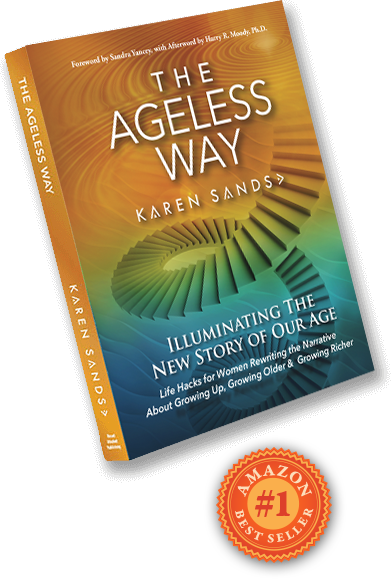 There’s an exciting theme running through news articles, blogs, and various recent studies. From articles on remodeling or technology to studies of the future of the workplace, one idea keeps resurfacing: customization. We’ve discussed how this applies in the workplace (e.g., “A Future That Works”) and in tailoring our communities (e.g., “Communities of the Future”), but now I’m starting to see it nearly everywhere I look.
There’s an exciting theme running through news articles, blogs, and various recent studies. From articles on remodeling or technology to studies of the future of the workplace, one idea keeps resurfacing: customization. We’ve discussed how this applies in the workplace (e.g., “A Future That Works”) and in tailoring our communities (e.g., “Communities of the Future”), but now I’m starting to see it nearly everywhere I look.
Take, for example, the recent study findings from Harvard’s Joint Center for Housing Studies, which predicts rapid growth in home improvement spending in the coming years. Much of this comes from the “age in place” phenomenon. Boomers especially who have different needs or even tastes than they did when they first bought their homes don’t want to (or can’t) sell, so as the economy improves, they are investing in remodeling.
For many, the remodel combines function, foresight, and fashion—looking at their existing needs as well as future possible needs and remodeling to serve them but without sacrificing aesthetics. For example, wider hallways, open spaces, recessed floor lighting, and modern-looking features that double as grab bars without looking the part—these are ideal for toddlers in the house as well as for accommodating the needs of residents and guests who’ve suffered illness or injury.
The concept of “universal design” rests on this idea of combining accessibility with beauty in building and remodeling rather than tacking on necessary items as they are needed, which can quickly make a beautiful home resemble a hospital. In other words, universal design means customizing your home now to suit the present and the future. You don’t have to choose one or the other. Not to mention the added property value of making your home more livable for anyone, at any age or stage.
The same idea is already in full force in technology. We are finally putting to rest the stereotype of people over 50 being technologically illiterate. Younger generations will always adapt more naturally to new technology, no doubt, but it no longer follows that older generations are technophobes. For example, 77 percent of boomers use the Internet.
With the constant stream of new products and software coming on the market, each one making it easier and easier for us to customize our technological experience—often in the palm of our hands—no generation is immune to the frustrations of figuring out new software or a new device.
We all share that moment, with each new product, of having to tailor it to our needs, sync it with our existing devices and computers, figure out what’s wrong when it doesn’t work as expected, and on and on . . . which points to yet another area that is likely to be increasingly customized—tech support. The ongoing technology explosion will not continue to serve anyone without increasingly personalized, accessible support for each new device.
The upshot? Not only do we all need to look toward a future with an eye to how we want to customize it—to suit our personal and professional needs and wants in flexible, adaptable ways—but those of us who want to take a step beyond this to help shape the future with our ideas, our businesses, our visions must also pay close attention to this trend. I’ve given examples from the remodeling industry and the tech industry (as well as my earlier blogs on the workplace and on building new communities), but this principle applies in nearly every field—including yours.
How will your business or your vision be customizable to particular individuals and groups? How will you customize your life and your work so that they grow and change with you?
Image credit: flickr.com Photograph by Nantaskart!







Hello, Karen.
We met at the Boomer Business Summit 2013. Glad to continue the conversation. Unfortunately, Jean, Karen & I didn’t consider universal design or aging in place concepts when we created our cooperative household. 3 flights of stairs are a bad combination w/ Boomer knees & joints. Thank you for the timely reminder that, while our attitudes might stay “ageless,” it is just smart to respect what the changing body requires. This was not even on the radar screen when we were adventuresome 50-somethings, house hunting for a shared home. Denial is powerful!
Louise, For JKL & My House Our House
Louise so glad we met. I hear you about those joints and knees. I spend most of my time on our main floor! Elevators may become ubiquitous as we enter our next years! Please stay in touch.
Wow, what an interesting post! I have now been challenged! I have recently re-shaped my coaching from focussing on “pure” life coaching to combining life coaching with processes to unlock creativity. I hope that in doing so I will be enabling my clients to in fact customise their own experience of life, to uniquely position themselves as creative visionary leaders – and certainly that is creating an exciting life for me which allows me to “play” while I work but I hadn’t considered that I was in fact customising my own experience. Thank you making me think today 🙂
Carolyn Bravo for what you are up to. Creativity is the root of all innovation, and we need tons more of it as a nation and a people. Thanks for sharing your aha about your own customizing!:)
Love that I “made you think today”:) Means so much to hear from you. Please keep me posted on your re-shaping process!:)
When I think of the service industry customization seems akin to the provision of great Customer Service. If we can provide an experience that takes into account the unique needs and preferences of our Clients, then we can offer them a service like no other.
Ang 🙂